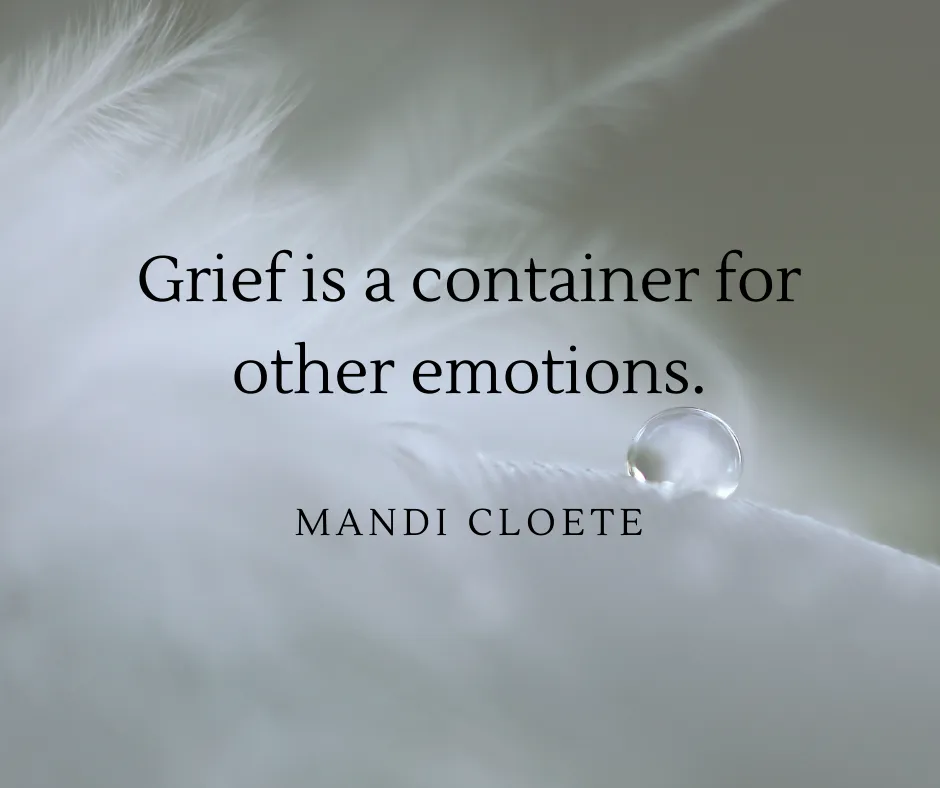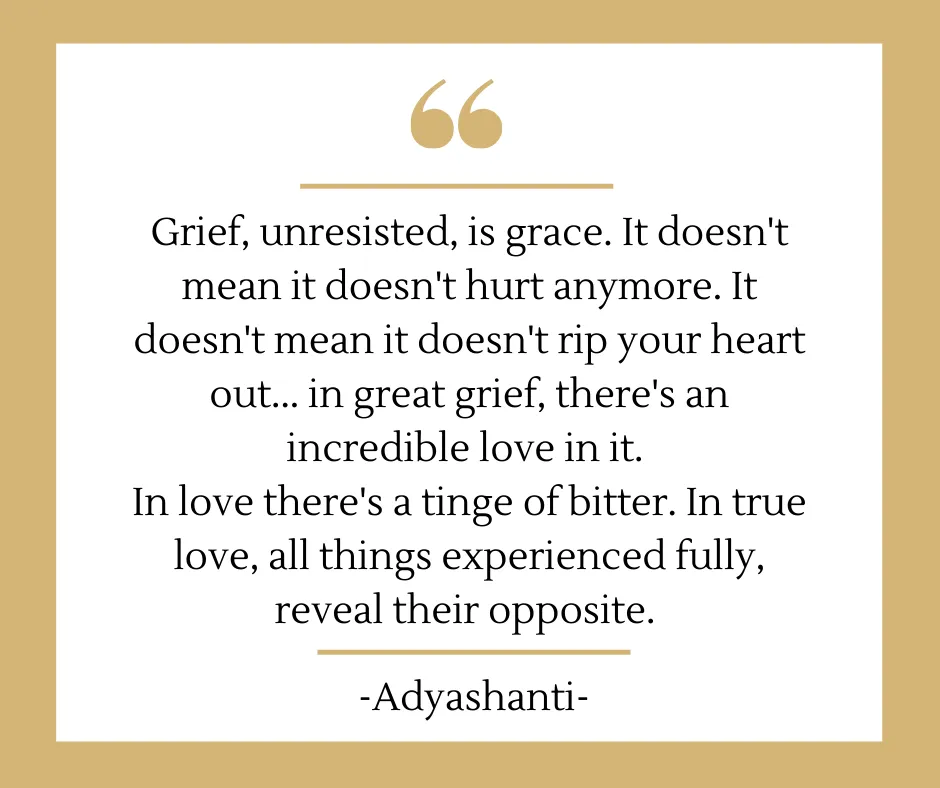Mandi Cloete

Mandi Cloete · Jan 2000 · 4 min read
Grief is a container for other emotions, such as sorrow, sadness, fear, emptiness and longing. Experiencing these deep intense emotions can feel like you’ve been taken over by something you cannot control. Grief colours our experience of life. We often become rooted in the past unable to fully enjoy present life.
We seek out ways to distract, numb or deny our pain. By refusing to lean into our pain we prolong the experience of it, thereby limiting the healing and growth available.
I know the energy it takes to hold intense overwhelming emotions at bay, and the fear of opening the floodgates lest I be swallowed up entirely. But what I’ve learnt is that pain and suffering offer an entry point to love, liberation and peace.
With self-awareness practices we become interoceptive – more attuned to our body/mind/energy system and the emotions within our system. Research shows that interoceptive awareness supports our ability to engage in life’s challenges with flexibility, adaptability and resilience. It also increases natural pain control, empathy, intuition and the desire to self-care.
When we create distance from our emotions and feelings, through distraction, denial, addiction and the endless act of being busy, we become lost in our head and disconnected from our essential self. Opening the door to our feelings offers a deep connection with self and with presence, and only through moving back into our body can we occupy the fullness of our being.
Healing
We each have within us a conscious awareness, a wisdom and intelligence, that knows just what is needed and how to be in relation to our grief. I want to share with you how to access this wisdom. But first, let’s look at emotions. In Latin the word emotion is ‘emotere’, which literally means energy in motion. Emotions are waves of energy which carry feelings such as joy, sorrow, sadness, anger, frustration. These waves are invisible to the naked eye and travel faster than thought. Emotions are themselves, physical states arising from the body in response to external stimuli. In other words, emotions are ever changing, moveable, not fixed. We tend to clamp down tight around emotions, identifying and defining ourselves by them.
Emotions and feelings, what’s the difference? “Feelings are mental experiences of body states, which arise as the brain interprets emotions, themselves physical states arising from the body’s responses to external stimuli.” Professor Antonio Damasio.
Emotions as communications help us to make life meaningful, transforming our world from a sequence of events, data and facts to a living and breathing experience. When we look at emotional and physical pain as messages from the unconscious – PAIN is Please Acknowledge, Information, Now!
From an energy perspective, pain as a consequence of trapped emotions, beliefs and unconscious programs, appear to me as clusters of energy attached to the body system, and sometimes the organs that generated them. Our perceptions of self and life become informed and influenced by the information and beliefs stored in these clusters. They are not the truth of who you are, but they do veil your true self.

In my work with people experiencing grief through loss of a loved one or a child, their health, identity or way of life, I have seen how embracing a mind/body/spirit approach allows compassionate, deep and powerful healing, and for love to take over. Mary O’Malley writes, ‘what is in the way, is the way.’ I believe this too and I believe Embodied Wisdoming & Grief Movement helps open the door so you can meet your pain and begin to cultivate a deep connection with yourself while unlocking your natural healing ability. Those who have attended have said this program allowed them to find a way to sit with their grief, experience more connection to self and awareness of how to feel okay with not being okay. Others shared how by embracing their pain and moving with it they were able to release it making space for pure love.
Those who have attended have said this program allowed them to find a way to sit with their grief, experience more connection to self and awareness of how to feel okay with not being okay. Others shared how by embracing their pain and moving with it they were able to release it making space for pure love.
Cultivate a practice of conscious presencing
Quite simply, conscious presencing is the action of being here now and is key to healing. Our body loves to sigh. Breath is our very own magic provides a kind of sanctuary which we can access and use anywhere, anytime. Conscious breathing ignites praan – the pure essence of life and vitality – in every cell in our body.
Our body loves deep wide breaths yet most of us live the day shallow breathing. When we breathe consciously, we experience our own inner sanctuary of deep, open peace. We drop into our body, create balance within our ANS, autonomic nervous system, and heart coherence. This is where we come home to our essential self and access the deep wellspring of embodied wisdom. Here compassion flows easily and as we unfold all that we’ve held tightly onto, the deepest human pain minimises and the space for reconnection and healing occurs.
As a moment-to-moment practice, when thoughts become intrusive, and the mind restless, when we’re looking outside of ourselves for a remedy of peace, bring your attention to your breath. Here in the present moment. Watch the breath ebb and flow, rise and fall. Feel the sensation of the breath in your body. Watch. Feel. Sense. Allow deep slow breaths. Silently affirming to yourself, I Am Here.
Copyright © 2019 Living Presence | Photos by Rachel Callander
